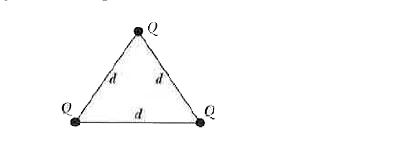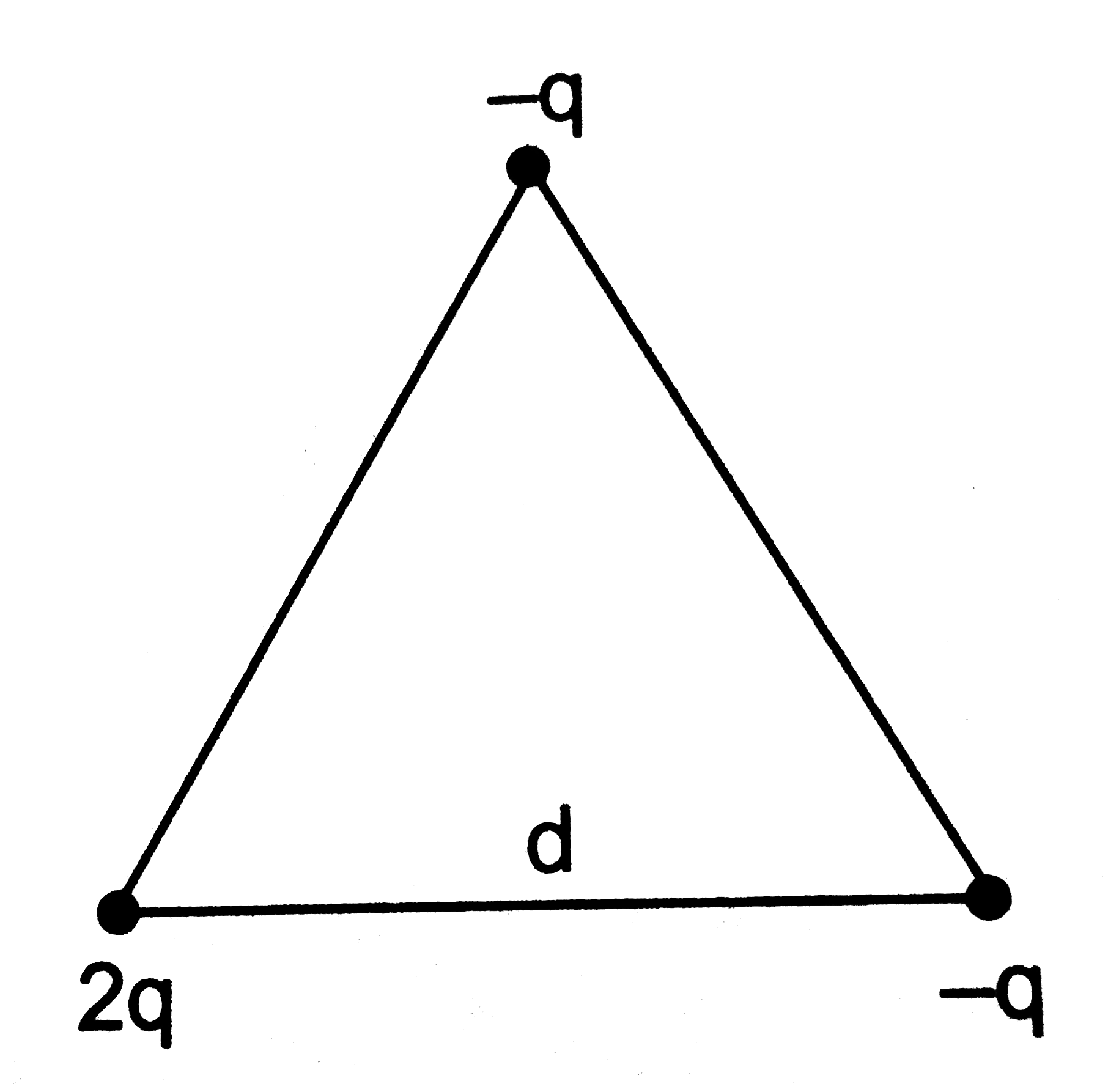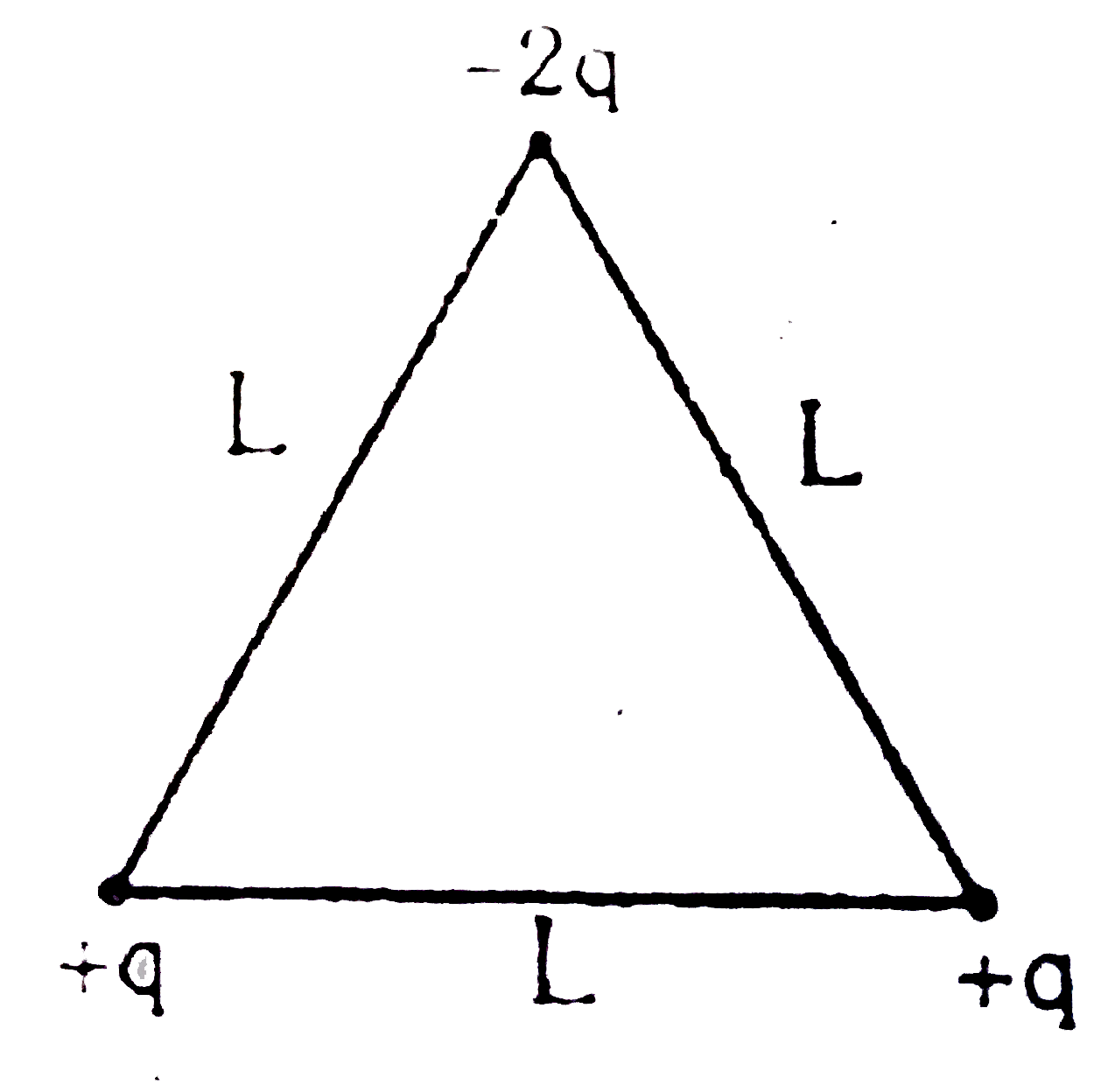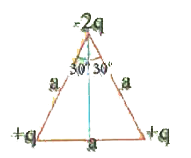Three identical point charges, q, are placed at the vertices of an equilateral triangle as shown in the figure. The length of each side of the triangle is d. Determine the magnitude and direction of the total electrostatic force on the charge at the top of the triangle.

Q2√34πε0d2, directed upward
Q2√34πε0d2, directed downward
Q2√32πε0d2, directed upward
Q2√32πε0d2, directed downward
The correct Answer is:A
Step by step video, text & image solution for Three identical point charges, q, are placed at the vertices of an equilateral triangle as shown in the figure. The length of each side of the triangle is d. Determine the magnitude and direction of the total electrostatic force on the charge at the top of the triangle. by Physics experts to help you in doubts & scoring excellent marks in Class 12 exams.
Topper's Solved these Questions
- BOOK - RESNICK AND HALLIDAYCHAPTER - ELECTRIC CHARGES AND FIELDSEXERCISE - Practice Questions (More than one correct Type )3videos
ELECTRIC CHARGES AND FIELDS
- BOOK - RESNICK AND HALLIDAYCHAPTER - ELECTRIC CHARGES AND FIELDSEXERCISE - Practice Questions (Linked Comprehension)5videos
ELECTRIC CHARGES AND FIELDS
- BOOK - RESNICK AND HALLIDAYCHAPTER - ELECTRIC CHARGES AND FIELDSEXERCISE - Problems63videos
ELECTRIC CHARGES AND FIELDS
- BOOK - RESNICK AND HALLIDAYCHAPTER - ELASTICITYEXERCISE - PRACTICE QUESTIONS (Integer Type)3videos
ELASTICITY
- BOOK - RESNICK AND HALLIDAYCHAPTER - ELECTRIC POTENTIALEXERCISE - (PRACTICE QUESTIONS) Integer Type1videos
ELECTRIC POTENTIAL
Similar Questions
Knowledge Check
- Question 1 - Select One
three points charges are placed at the cornors of an equilibrium triangle of side L as shown in the figure
 Athe potential at the centroid of the triangle is zero.BThe electric field at the centroid of the triangle is zeroCThe dipole moment of the system is √2qLDThe dipoe moment of the system is √3qL
Athe potential at the centroid of the triangle is zero.BThe electric field at the centroid of the triangle is zeroCThe dipole moment of the system is √2qLDThe dipoe moment of the system is √3qL - Question 2 - Select One
Three point charges q are placed at three vertices of an equilateral triangle of side a. Find magnitude of electric force on any charge due to the other two.
A(√34πε0)(qa)2B(√24πε0)(qa)2C(√34πε0)(q2a)2D(√24πε0)(2qa)2 - Question 3 - Select One
Three identical charges are placed at the vertices of an equilateral triangle. The force experienced by each charge, (if k=14πε0) is
A2Kq2r2BKq22r2C√3Kq2r2DKq2√2r2
(a) Three point charges q,-4q and 2q are placed at the vertices of an equilateral triangle ABC of side 'l' as shown in the figure. Obtain the expression for the magnitude of the resultant electric force acting on the charge q.
(b) Find out the amount of the work done to separate the charges at infinite distance.
 View Solution
View SolutionThree charges are arranged on the vertices of an equilateral triangle as shown in figure (29.E6) find the dipole moment of the combination.
 View Solution
View SolutionConsider the charges q,q and -q placed at the vertices of an equilateral triangle of each side l. What is the force on each charge ?
View SolutionThree charges 2q,−q,and−q are located at the vertices of an equilateral triangle. At the center of the triangle,
View SolutionThree point charges are placed at the corner of an equilateral triangle. Assuming only electrostatic forces are acting.
View Solution



